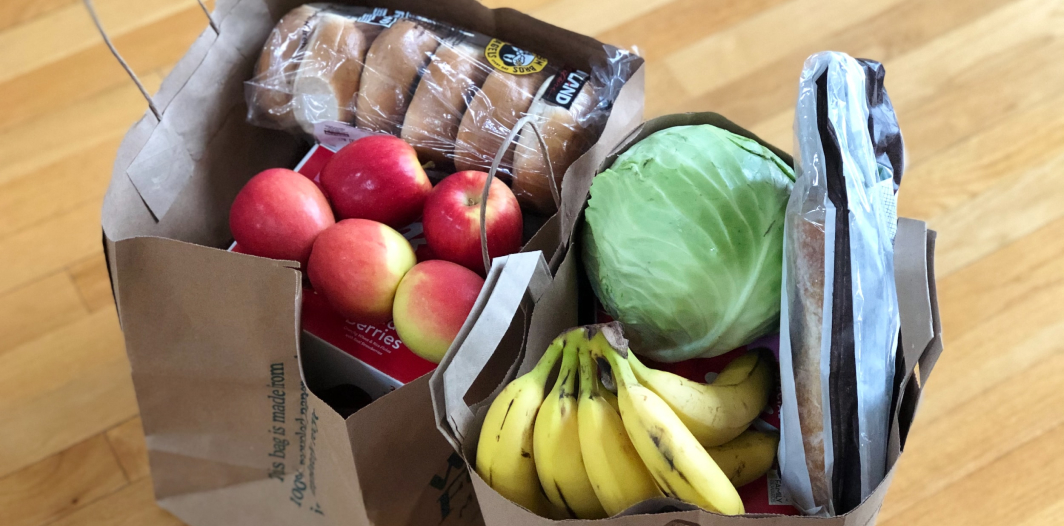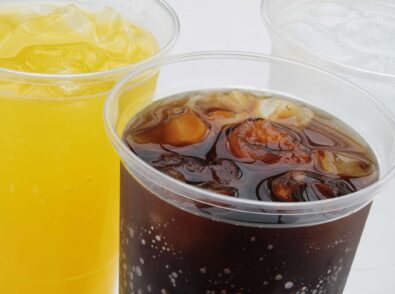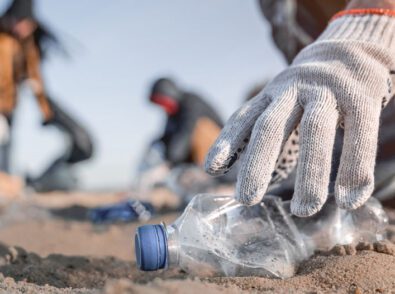What You Need to Know About Single-Use Plastic Regulation in California

Historic legislation passed in 2022 in California banning all single-use and non-sustainable packaging. The law is designed to cut plastic use, improve California’s recycling system, and shift the waste burden back onto the packaging industry.
In June 2022, Gov. Gavin Newsom of California enacted the Plastic Pollution Prevention and Packaging Producer Responsibility Act, also known as Senate Bill (SB) 54. This legislation requires all packaging to be compostable or recyclable by 2032. The bill dovetails neatly into the California Climate Commitment, a $53.9-billion initiative underway to reduce pollution and protect Californians from the effects of extreme drought, heat, and fires.
The projected result of the rule will reduce plastic packaging by 25% and recycle 65% of single-use items by the deadline. Additionally, the law will channel $5 billion collected from plastic producers to support efforts to achieve the goal and help communities inordinately affected by plastic waste.
How Will the California Plastic Ban Reduce Plastic Consumption?
Plastic material production has increased over the last decade, and most plastics are made from fossil fuels. Plastic waste management has mainly focused on end-of-life efforts like recycling, but these methods do not keep up with production. Considering that only 9% of all plastics are recycled, it’s high time for a change. As the most sweeping and stringent plastics ban in the nation, California is setting a new standard that will, hopefully, inform the way forward for all states.
The single-use plastic ban in California seeks to reduce plastic consumption by 2032 through these measures:
- The weight and number of single-use plastic packaging and foodware items must be reduced by 25%.
- Single-use packaging of any material and plastic single-use foodware must be recyclable or compostable.
- Mandatory recycling rates for plastic materials will be instituted, increasing to 65% by the target date.
- Statewide reuse and refill mandates—the first of their kind in the United States—will be implemented.
This law also requires responsible handling of recycled materials and bans burning plastics or generating energy or fuel from plastic waste.
What Does the California Single-Use Plastic Ban Regulation Include?
The California plastic ban is a landmark initiative in sustainability, but more stringent legislation will help to curb the environmental damage we’re experiencing now. Single-use item bans will help to fill the gaps, keeping massive amounts of waste out of landfills—but individuals and business owners have a part to play.
SB 54 manages the sale, import, and distribution of plastic materials, but it’s unlikely we’ll see a widespread end to the manufacture and distribution of plastic products. Even banned items, like expanded polystyrene (EPS), have exemptions when used for medical devices, drugs, and seafood storage and transportation. Until there is a comparably sterile product that fits with today’s sustainability mandates, there will always be some banned products in circulation. However, new requirements for producer responsibility may drive innovation once we have a better grip on the situation.
It’s vital to note that although SB 54 is statewide, it stands apart from specific county and municipal legislation and bans. In December 2022, Los Angeles and San Diego enacted a polystyrene ban, which went into effect in April 2023. Because the ban takes place in California’s two largest cities, it stands to support broader efforts to reduce dependence on single-use plastics and make life better and healthier for lower-income communities.
Foam Bans
Many cities and counties in California have polystyrene—or foam—product bans. Currently, 129 cities or counties have already enacted polystyrene bans, with some dating back as far as the late 1980s. In these older cases—specifically Berkeley, Yountville, Sonoma (city and county government facilities only), and Carmel—most have banned single-use EPS in foodservice and require at least 50% of food packaging materials to be compostable, recyclable, or reusable.
But as you navigate the list of existing localized bans, you’ll see they range significantly in scope. For example, not all bans are complete. Some apply only to restaurants and foodservice, others only to government facilities, and still others are total bans on using and distributing any polystyrene products.
California Bans on Plastic
According to Californians Against Waste, the average life of a plastic bag is about 15 minutes. Very few plastic bags are recycled. After their useful time is up, most bags are relegated to landfills, where they will take up to 1,000 years to degrade.
California also has bans on single-use carryout and produce bags. In 2014, SB 270 was passed to ban single-use carryout bags in most California municipalities. With the passing of SB 1046 in California in 2022, single-use produce bags were also banned, though the phaseout is still ongoing and won’t be in full force until January 1, 2025. After that date, stores will be required to replace plastic film with paper or some sort of compostable bag.
Read more to learn about bans on specific items:
Producer Responsibility in the California Plastic Ban
Many cities and states have bans on single-use plastic bags. However, SB 54 tackles the plastic pollution problem at the source, shifting the responsibility from consumers to producers. To quote Gov. Newsom, “We’re holding polluters responsible and cutting plastics at the source.”
We’re holding polluters responsible and cutting plastics at the source.
Gov. Newsom
The single-use plastic regulation law establishes an extended producer responsibility (EPR) program to give producers a strategic role in this sustainability goal. Producers across every sector of the economy must manage packaging and single-use plastic products and ensure these products sold in California are recyclable or compostable. EPR gives producers the responsibility of managing plastic products after their useful life because they will create products that are easier for consumers to reuse or recycle.
The EPR program also holds producers financially responsible for managing packaging products. Financial responsibility aims to require producers to internalize waste management and recycling expenses and make these materials more sustainable.
SB 54 also mandates that any company that makes, sells, or distributes single-use plastic items covered under the law is now required to join an organization dedicated to plastic producer responsibility. Every year from 2027 to 2036, each group member must pay the state $500 million, which will go to state agencies for monitoring and reducing the health and environmental impacts of plastics in California and addressing and mitigating effects within underserved and low-income communities.
Criticisms of the Single-Use Plastic Ban
While we know the single-use plastic ban and related initiatives will benefit California and its residents, businesses involved in manufacturing, distributing, and selling such items are vehemently opposed. They state the aggressive bill and associated taxes will cost consumers who can least afford it around $900 per year, although the truth is that the bulk of the tax would fall on the producers themselves. Plus, tax revenue from the initiative will be channeled into habitat restoration, recycling programs, and implementation and enforcement of the rule.
Since the California plastic ban was passed, individuals and organizations—including those who support reducing plastic pollution—have raised concerns about the new law. The main critiques are that SB 54:
- Gives too much authority to packaging companies to self-regulate: SB 54 requires plastic manufacturers to join an EPR program. In effect, the companies contributing to the plastic pollution problem are in charge of solving it.
- Addresses the symptoms instead of the cause: Companies in the EPR must also pay into a fund to clean up existing plastic pollution. These efforts treat the symptoms of plastic production instead of making changes at the source, like restricting plastic production.
- Is founded on ineffective plastic recycling: As previously established, current plastic recycling rates are at 9%, and SB 54 in California aims to increase this rate to 65% by 2032. Critics say that, while rooted in good faith, increasing the recycling rate is difficult since most plastics are not designed to be recyclable.
- Has many loopholes for plastic use and production: The new law requires plastic manufacturers to reduce single-use plastic products by 25% by 2032. Reducing the packaging size, using non-plastic packaging materials, and making reusable or refillable products have all been proposed as ways companies can meet this goal. However, if the terms “reusable” and “refillable” are not thoroughly explained, companies can use the loose definition to use nonrecyclable plastics in their products without repercussions.
It remains to be seen whether California will address these criticisms and how the California plastics ban will be enforced. Still, one might expect that health and safety inspectors, local bylaw enforcement, and the recyclers themselves will play a part. Additionally, if single-use plastics are not manufactured and distributed locally, the price will likely skyrocket, which will quite effectively reduce the impetus to buy—and that’s just simple economics.
Get Recyclable and Compostable Food Packaging From Greenprint
If you are a business owner looking for alternatives to single-use plastics for foodservice or other types of packaging, you have options and should not be worried too much about the change. Plastic carryout bags have been banned for a while, and customers adapted quickly.
When the dangers of BPA plastic and other types of water bottles became widely published, most people switched to reusable, refillable alternatives, which successfully created whole new industries and commercial opportunities for brands everywhere. There is no reason that single-use food packaging should be any different—it’s just a matter of ensuring the containers you use are recyclable and compostable.
Compostable foodservice containers like those offered by Greenprint are made of renewable plant-based materials like agave, sugar cane, polyhydroxyalkanoates (PHA), and paper fibers. Together, we can work towards a better future with California’s trend-setting initiative leading the way.
References
- https://www.gov.ca.gov/wp-content/uploads/2022/06/California-Climate-Commitment-.pdf
- https://www.oecd.org/environment/plastic-pollution-is-growing-relentlessly-as-waste-management-and-recycling-fall-short.htm
- https://cen.acs.org/policy/legislation-/California-mandates-recycling-single-use/100/web/2022/07
- https://www.wastedive.com/news/los-angeles-san-diego-plastic-foam-bag/638174/
- https://www.cawrecycles.org/polystyrene-local-ordinances
- https://www.cawrecycles.org/sb1046-eggman-gonzalez
- https://pubs.acs.org/doi/10.1021/acssuschemeng.9b06635
- https://calrecycle.ca.gov/plastics/carryoutbags/
- https://calrecycle.ca.gov/epr/
- https://www.latimes.com/environment/story/2022-04-17/fight-brews-over-california-measure-to-reduce-plastic-waste
- https://www.ncbi.nlm.nih.gov/pmc/articles/PMC10095618/
- https://www.sciencedaily.com/releases/2020/02/200218182202.htm





